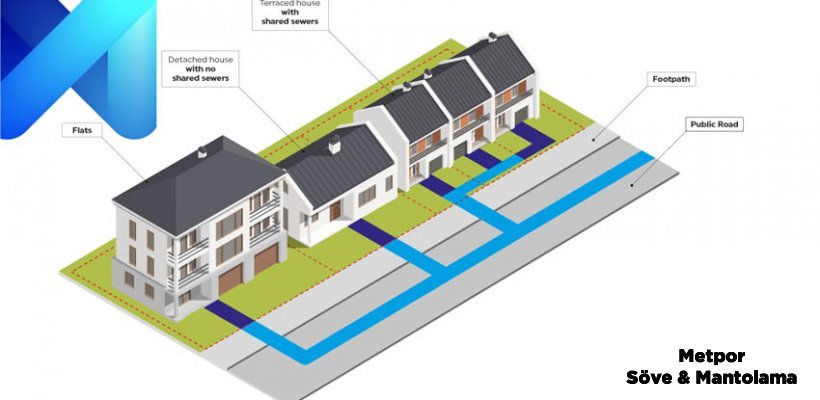What is Drainage?, How Is It Made?
Drainage is a special expertise that can make water and moisture insulation applied with the aim of protecting the houses from damages caused by surface and underground waters . In general terms, moisture - waterproofing in the foundations is carried out with the aim of ensuring the safety of the building from the waters caused by the melting of snow and ice, as well as underground surface and leachate waters.
If the foundations of the houses are completed without creating a waterproofing layer, protection against water will only be possible with the sheathing layer to be made on the curtain walls and the drainage line that will surround the building. It is vital in this type of insulation that the drainage line is not blocked.
Drainage is the artificial removal of water, both surface and sub-surface. Drainage is often a major element of civil engineering and construction projects and is necessary to avoid flooding and other damage. Typically, effluent is conveyed by drains to sewers, and from sewers to a suitable outfall or treatment plant.
While waterproofing with polymer bitumen membranes in foundation waterproofing, it is recommended to program with two layers of membranes and to have these membranes with polyester felt carrier. A protective layer has to be created in order to prevent point damages in the parts where the waterproofing is in contact with the soil, and in fact, in the waterproofing procedure, which is a difficult and critical program, drainage insulation, which is the main principle of insulation, is required. Drainage will minimize leakage waters in case of insulation leaks, as well as ensure working on a dry surface during the program .
However, a fact that should not be forgotten is that drainage will never replace insulation. Although the drainage procedure is carried out with modern materials , there is a possibility of water reaching the insulation. In basic waterproofing programs, " drainage " undertakes the task of reducing the pressure of the water.
What is Internal Drainage?
It is the type of drainage applied in the basement in cases where external drainage is not possible . Especially in the center of the houses, the basement flooring is made in the form of a well with a depth of at least 2 m and a length of 50x50 cm. The well is built as a rubble stone wall without mortar and is covered with a sheet metal or concrete cover. An automatically working water engine is placed on the well. The other end of a water pipe, one end of which is connected to the place where the water will be poured and also connected with the water motor, is lowered into the well, but the pipe is left 15-20 cm above the bottom of the well and a strainer is attached to the end. When the water leaking from the ground rises up to 40-50 cm below the basement floor level, the water pump works and ensures that the water is discharged.
What is External Drainage?
The difference from the internal drainage is that around the house, a 5-10 cm inclined channel is opened 50-100 cm outside the main wall and 30-50 cm deep from the main floor, and concrete or clay pipes-buckets with a diameter of 20 cm are laid at intervals of 2 - 4 cm at the bottom of the channel. . The lower half of the joints of the pipes are covered with cement mortar. The channel is filled with clay up to half the height of the pipe and compacted thoroughly, and the clay fill and pipes are first filled with large and then small stone pieces, and the area near the surface is filled with coarse sand. of the drainage channelIn places where it makes corners, stone or concrete manholes - chimneys, at least 50 x 50 cm in size, starting from 15-20 cm below the bottom of the canal and increasing to the vicinity of the garden, are built, pipes are connected to these manholes and the lowest level pipe is creek, sewer, etc. It is connected to the places and the water is removed from the building.
In drainage , perforated and corrugated plastic PVC pipes are also used instead of pipes. These pipes, with a diameter of 10-20 cm and a length of up to 100 m, are preferred because of their lightness and simplicity of workmanship. In simple drainages, a drainage program can be made with large stone pieces, slab stones or bricks.







Metpor
info@metpordekor.com
Okunma Sayısı : 180